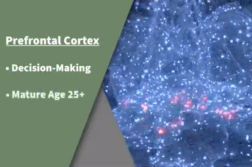JACKSONVILLE, Fla. (Ivanhoe Newswire) – Uncontrolled convulsions, tremors, jerky movements, staring, stiffening of bodies and loss of consciousness — these are all signs of epilepsy in children. In the U.S., 3.4 million people have epilepsy. Early diagnosis and treatment are key for these kids to develop normally.
Sarah Patty can’t believe it was just over a year ago, her little guy, Johnny had brain surgery. Johnny has epilepsy; his stiff and jerking movements started when he was two and got increasingly worse.
His doctor, Fernando Galan, a pediatric epileptologist at Nemours Children’s Hospital in Jacksonville, Florida, says, “He had seizures that were starting from only one part of his brain.”
Unfortunately, medications didn’t work.
“If you fail more than two anti-seizure medication trials at appropriate doses, then you’re classified as treatment resistant,” Dr. Galan explains. “We do know that outcomes are better the earlier you do surgery.”
Today, non-pharmaceutical options include ketogenic diets that limit sugar and carbs and have been proven for some to ease, even cure, seizures. Vagus nerve stimulation controls seizures by sending small pulses of energy that regulate the brain’s excitability. Laser interstitial thermal therapy uses a tiny laser fiber to deliver heat directly into the epileptic lesion. The final option for Johnny included surgery.
Dr. Galan adds, “He underwent a surgery that’s called a right temporal lobectomy. So, we removed his temporal lobe and we were able to stop his seizures.”
Three days after surgery, Johnny was moving slowly. Six days later, he was almost back to normal, and ne month later, Sarah had her little rambunctious boy back.
“I never would’ve guessed that our son would be this active,” she exclaims.
Now, Johnny is ready to start first grade with nothing holding him back.
Also, Johnny’s speech improved after surgery. Doctors believe the area of the brain causing the epilepsy may have also been impacting his speech. Dr Galan says, depending on the type of epileptic surgery, up to 70 percent of children will remain seizure free long-term, but there’s always a risk the seizures can return – that’s usually because the extent of where the seizures were coming from is larger than what was expected.
Contributors to this news report include: Marsha Lewis, Producer; Roque Correa, Videographer & Editor.
To receive a free weekly e-mail on medical breakthroughs from Ivanhoe, sign up at: http://www.ivanhoe.com/ftk
Source:
MEDICAL BREAKTHROUGHS
RESEARCH SUMMARY
TOPIC: SAVING JOHNNY: TREATING UNTREATABLE EPILEPSY
REPORT: MB #5251
BACKGROUND: Epilepsy is a neurological condition in which an influx of electrical activity travels to the brain causing frequent seizures. Over 3 million people in the United States are epileptic. There are several therapies available for seizure control; however, some patients are unresponsive to them all. These individuals are referred to as treatment resistant, and it’s reported that about 20-40% of patients with epilepsy are prone to being drug-resistant (treatment resistant). This diagnosis is determined once an individual has failed to maintain a seizure free state after attempting two antiseizure medications.
(Source: https://www.uptodate.com/contents/evaluation-and-management-of-drug-resistant-epilepsy
https://www.epilepsy.com/treatment)
DIAGNOSING: A thorough study of the patient is performed before determining whether they are indeed treatment resistant. To diagnose treatment resistant epilepsy, a neurological team will confirm the validity of the patient’s initial diagnosis and the form of epilepsy they have. Next, the team will ensure the medication and dosage amounts prescribed to the patient are appropriate according to their needs. Finally, the patient’s quality of life will be assessed to rule out any triggers that may encourage seizing in the body. This can include stress, sleep deprivation, or alcohol use.
(Source: https://www.uclahealth.org/news/options-for-drug-resistant-refractory-epilepsy)
NEW TECHNOLOGY: The VNS Therapy System (Vagus Nerve Stimulation) is a medical device therapy used for the management of treatment-resistant epilepsy. It is the first FDA-approved technology to treat this condition. This therapy is said to modify the region of the brain prone to convulsing known as the “Vagus Afferent Network”. By doing so, it’s predicted that the middle stage of a seizure (referred to as the ictal phase) won’t last as long. This can be extremely helpful for recovery – as high levels of electrical activity occur in the brain during that stage and can be of great detriment to a patient.
(Source: https://www.frontiersin.org/articles/10.3389/fmedt.2021.696543/full)
FOR MORE INFORMATION ON THIS REPORT, PLEASE CONTACT:
Leah Goodwyne
If this story or any other Ivanhoe story has impacted your life or prompted you or someone you know to seek or change treatments, please let us know by contacting Marjorie Bekaert Thomas at mthomas@ivanhoe.com




